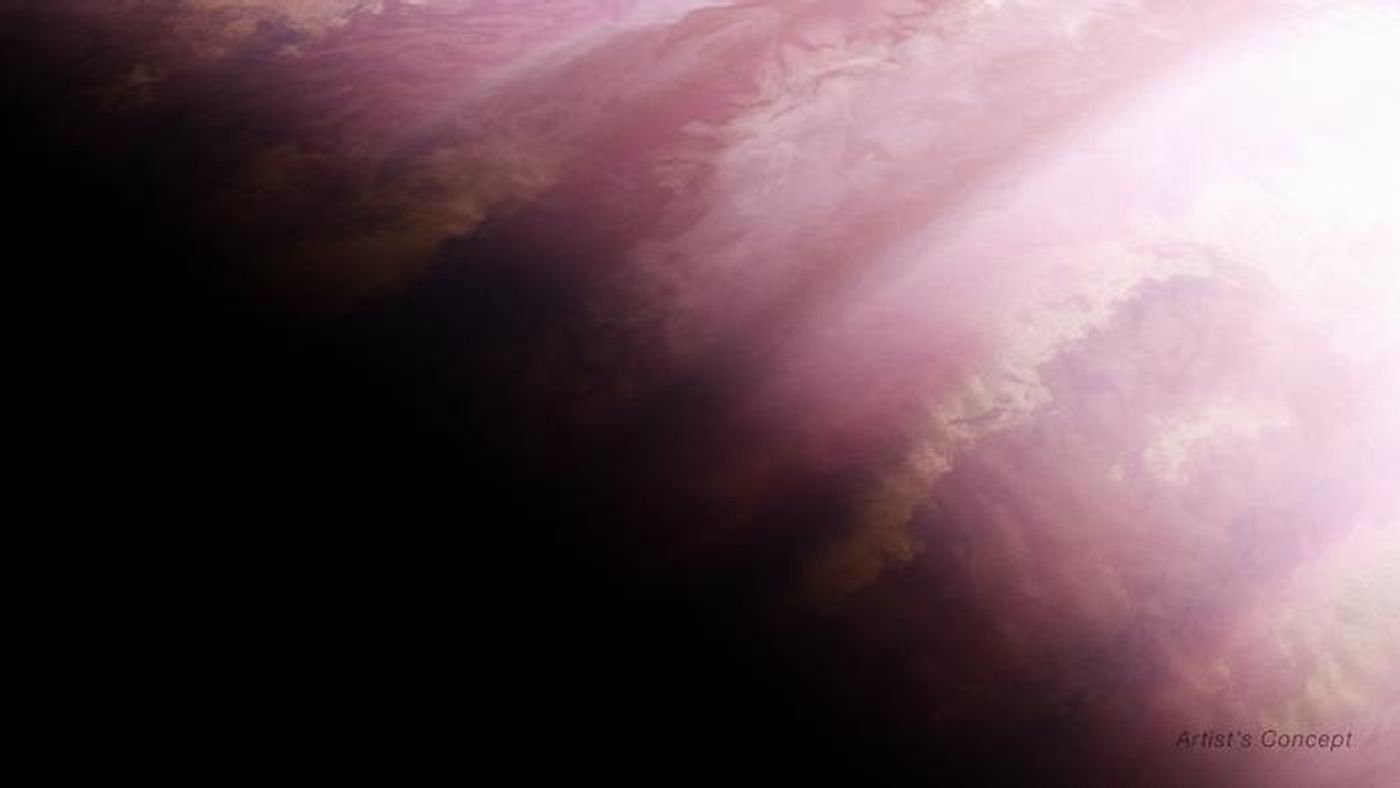Day-Night Atmospheric Variations Detected on WASP-39 b by Webb
Could an exoplanet’s that is tidally locked to its parent star exhibit differences in atmospheric behavior at the boundary of its permanent dayside and permanent nightside, also known as the terminator? This is what a recent study published in Nature hopes to address as a team of international researchers investigated the unique atmosphere of WASP-39 b, whose radius is just under 1.3 times that of Jupiter, orbits in just 4.1 days, and is located just under 700 light-years from Earth. This study holds the potential to help scientists better understand the formation and evolution of exoplanet atmospheres, specifically once that are tidally locked to their parent star.
Artist's rendition of WASP-39 b's terminator. (Credit: NASA, ESA, CSA, R. Crawford (STScI))
“WASP-39 b has become a sort of benchmark planet in studying the atmosphere of exoplanets with Webb,” said Dr. Néstor Espinoza, who is an Assistant Astronomer and Mission Scientist for Exoplanet Science at the Space Telescope Science Institute (STScI) and lead author on the study. “It has an inflated, puffy atmosphere, so the signal coming from starlight filtered through the planet’s atmosphere is quite strong.”
For the study, the researchers used the Near-Infrared Spectrograph (NIRSpec) onboard the powerful NASA James Webb Space Telescope (JWST) to observe WASP-35 b’s atmosphere in incredible detail, revealing temperature differences of 1,450 degrees Fahrenheit (800 degrees Celsius) and 1,150 degrees Fahrenheit (600 degrees Celsius) for the evening and morning, respectively. The researchers postulated that this could be from the wind directions within the atmosphere traveling from the nightside to the morning side to the dayside to the evening side, which was determined from using General Circulation Models, which are 3D models that are traditionally used for Earth-based weather predictions.
“This analysis is also particularly interesting because you’re getting 3D information on the planet that you weren’t getting before,” said Dr. Espinoza. “Because we can tell that the evening edge is hotter, that means it’s a little puffier. So, theoretically, there is a small swell at the terminator approaching the nightside of the planet.”
What new discoveries will researchers make about WASP-39 b and other exoplanet atmospheres in the coming years and decades? Only time will tell, and this is why we science!
As always, keep doing science & keep looking up!
Sources: Nature, NASA, EurekAlert!, NASA (1)









